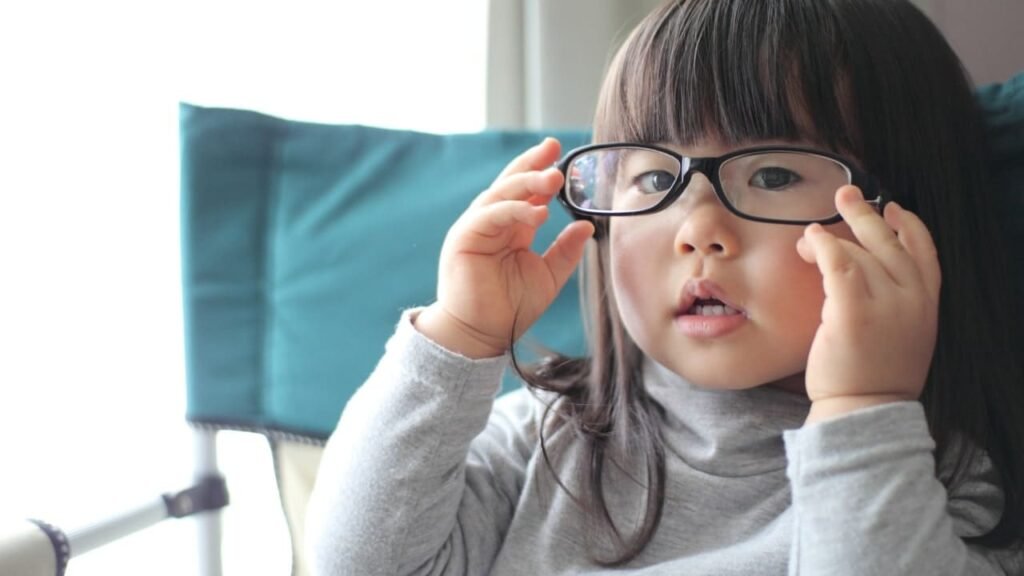
Table of Contents
Do you know that an epidemic is on the horizon?
Let’s do a small experiment. Tell me what comes to your mind when I say epidemic. Is it a virus? Now, what if I tell you that the next epidemic won’t be due to a virus? It’s something much closer to home—our phones and computers. That’s right, the screens we love are dangerous for our eyesight.
Welcome to the Digital Age!
The epidemic which could be fast approaching us is due to our daily habits. Commonly known as short-sightedness, Myopia is a disease which can soon become a global health concern. Yes, you read that right. As per the World Health Organization, by 2050, half of the world’s population could be affected by Myopia.
What does it imply? Our digital lifestyle, increase in screen time, and mobile addiction could lead to the next worldwide health challenge.
The blame will rest solely with you. We cannot blame some infectious agent for it!
What is Myopia?
In simple words, it is short-sightedness. Due to this condition, you aren’t able to see faraway objects. It is the exact opposite of Hyperopia or farsightedness, in which nearby objects may appear blurry. While you can see things nearer to you, Myopia will make distant objects appear blurry. Imagine trying to read a street sign and it looks blurry, but reading a book is no problem. You will often find yourself squinting or experiencing eyestrain and headaches from straining to see clearly.
It happens when the eyeball becomes a bit too long, making it difficult for your eyes to focus the images on the retina, the light-sensitive part of the eyes. Images are instead focused in front of the retina, making it difficult to see the distant object. Hence, it is called short-sightedness. Unsurprisingly, Myopia is common and one of the most prevalent vision issues worldwide. Not just adults, it also impacts children.
Wondering if you have Myopia? An eye doctor can confirm it for you with a simple eye test where they will ask you to try and read letters on a distant chart. The quick test can easily determine whether someone struggles with distance vision. If needed, further examination by an eye care professional may be prescribed.
The Growing Concern

“By 2050, half of the world might be struggling with Myopia.”
The WHO is worried. There has been an alarming rise in the number of Myopia cases across the world. This is especially true in urban areas and among young people like us. But, why is this?
Primarily, due to extensive daily screen time. Multiple studies conducted over the years point towards indoor activities such as reading or binge watching, and a lack of outdoor activities. A lot of us prefer to spend more time in the house, glued to the screens than being in the natural light outdoors.
Our so-called modern lifestyle in the digital age adversely impacts our eyesight and plays an important role in the development of Myopia. After all, how much stress can a pair of eyes handle?
What is the global impact of Myopia

Don’t be myopic!
Myopia or short-sightedness is just the beginning. When it becomes a public health challenge, in the not-too-distant future, the disease can potentially lead to serious ocular problems.
These include glaucoma, cataracts, and even retinal detachment. Scary, yes! Now is the time to take the World Health Organization’s projection seriously. If we don’t wake up now, then by 2050, 26 years from now, half of the world’s population may be short-sighted. Think of that!
In China, screen addiction has become a serious issue. Almost 90% of Chinese youngsters are myopic. This significantly high percentage is largely due to excessive screen time and again, not enough outdoor activity. The government responded by reducing screen time for children in schools and increasing their outdoor activities. Yes, the situation did call for government intervention.
Can We Stop Myopia from Spreading?
Yes, we can! And we don’t have to wait. We can start now.
While Myopia cannot be cured, it can be corrected. That’s why prevention is always better than cure. Rather than googling ‘What is the treatment for Myopia?’ or ‘How to cure Myopia,’ let us focus on adopting preventive measures to help manage the adverse impact and in some cases, even the onset of Myopia.
To tackle the condition, Taiwan conducted a simple experiment. The government encouraged primary schools to send students outdoors for at least 2 hours every day. Do you want to guess the outcome? It successfully reduced myopia rates from 50% to 46%. That’s a win!
7 Simple Steps to Protect Yourself from Myopia

Here are some simple, effective steps that individuals and communities can take to protect their eyes and improve eyesight:
Less Screen Time
Firstly, reduce the time spent looking at screens to help lessen eye strain and the risk of developing Myopia. No watching reels before bedtime! Remember the 20-20-20 rule: every 20 minutes, look at something 20 feet away for 20 seconds.
Go Outside
Spending more time outdoors can delay the onset of Myopia in children. Natural light is good for eye health. Even adults should spend time outdoors. It will not just improve eyesight, but will also do wonders for your overall well-being.
Regular Eye Checks
Visit an eye doctor regularly. If you find yourself squinting a lot, book an appointment. This can help in early detection, better management and even correction of Myopia. Regular eye examinations will allow for corrective measures, such as glasses or contact lenses.
Educational Programs
Schools and community centres should step up and help spread awareness about the risks of too much screen time. They can proactively encourage activities that reduce Myopia risk like exercises of the eyes, less television and more playing outside.
Urban Planning
What will encourage both adults and children to spend more time outdoors? Parks and lush green spaces can help embrace a healthier lifestyle by adopting outdoor recreation activities. In the long run, these very measures can combat the Myopia surge.
Healthy Diet
Nutrition plays an important role! Eating foods rich in vitamins and omega-3 fatty acids can help support eye health. To plan a diet and keep myopia at bay, consult a doctor!
Vision Therapy
Some eye care professionals recommend vision therapy. What is that? It includes eye exercises designed to improve vision skills such as focusing, eye tracking, and coordination. Again, speak to your doctor!
Conclusion: Take Action Now
The threat of a Myopia epidemic is very real, and action is needed today. By understanding the condition, causes, and impact, you can take steps to reduce screen time and start protecting your vision. Remember, once you are diagnosed with it, Myopia cannot be cured naturally. You are responsible for your eye health. It starts with making conscious lifestyle choices. Taking care of your eyes today ensures better eye health tomorrow. Keep your eyes healthy!
To keep getting clarity on such interesting topics, please subscribe to Clarity Circuit.
Recommended Articles
If you found this topic interesting, you might also enjoy reading these articles:


